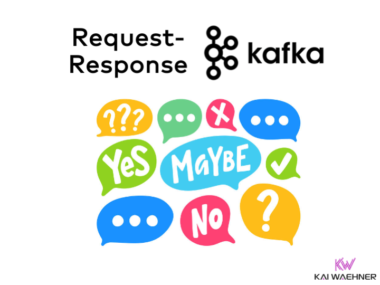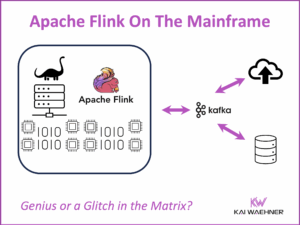These days, it seems like everybody is talking about microservices. You can read a lot about it in hundreds of articles and blog posts, but my recommended starting point would be this article by Martin Fowler, which initiated the huge discussion about this new architectural concept. This article is about the challenges, requirements and best practices for creating a good microservices architecture, and what role an Enterprise Service Bus (ESB) plays in this game.
Branding and Marketing: EAI vs. SOA vs. ESB vs. Microservices
Let’s begin with a little bit of history about Service-oriented Architecture (SOA) and Enterprise Service Bus to find out why microservices have become so trendy.
Many years ago, software vendors offered a middleware for Enterprise Application Integration (EAI), often called EAI broker or EAI backbone. The middleware was a central hub. Back then, SOA was just emerging. The tool of choice was an ESB. Many vendors just rebranded their EAI tool into an ESB. Nothing else changed. Some time later, some new ESBs came up, without central hub, but distributed agents. So, ESB served for different kinds of middleware. Many people do not like the term “ESB” as they only know the central one, but not the distributed one. As of today, some people even talk about this topic using the term “NoESB” or Twitter hashtag #noesb (similar to NoSQL). Let’s observe the future if we see the term “NoESB” more in the future…
Therefore, vendors often avoid talking about an ESB. They cannot sell a central integration middleware anymore, because everything has to be distributed and flexible. Today, you can buy a service delivery platform. In the future, it might be a microservices platform or something similar. In some cases, the code base might still be the same of the EAI broker 20 years ago. What all these products have in common is that you can solve integration problems by implementing “Enterprise Integration Patterns”.
To summarise the history about branding and marketing of integration products: Pay no attention to sexy impressive sounding names! Instead, make looking at the architecture and features the top priority. Ask yourself what business problems you need to solve, and evaluate which architecture and product might help you best. It is amazing how many people still think of a “central ESB hub”, when I say “ESB”.
Requirements for a Good Microservices Architecture
Six key requirements to overcome those challenges and leverage the full value of microservices:
- Services Contract
- Exposing microservices from existing applications
- Discovery of services
- Coordination across services
- Managing complex deployments and their scalability
- Visibility across services
The full article discusses these six requirements in detail, and also answers the question how a modern ESB is related to a Microservices architecture. Read the full article here:
Do Good Microservices Architectures Spell the Death of the Enterprise Service Bus?
Comments appreciated in this blog post or at the full article. Thanks.






